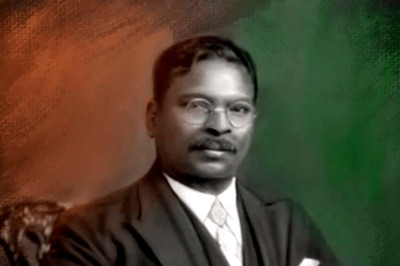
views
CHENNAI: Generally, people have no idea about why they perform certain rituals. Srila Prabupadha explains the reasons for some rituals... When Krishna left Hastinapura to go back to Dwaraka, an elaborate farewell ceremony was organised in his honour, in the presence of the Pandavas. The women of Hastinapura then began discussing amongst themselves. This conversation among the Hastinapura striyah, contained some esoteric spiritual truth. They offered a beautiful glorification - aho alam slaghyatamam yadoh kulam aho alam punyatamam madhor vanam. He is slaghyatamam, which means supremely glorified. Yadukula was supremely glorified. Vrindavana and Mathura are so punyatamam (pious), so great, that Krishna had appeared. They were uttering nunam vrata-snana-hutadinesvarah samarcito, vrata. This meant that great austerities were performed. The principle of austerities - voluntarily taking some difficulties for the body - exists in every religion, because vrata is essential. Snana huta, huta means to offer oblations to fire sacrifice, and arcana arcitah means worship. Samarcita isvarah means worship of the Supreme Lord. The residents of Hastinapura said, 'Look at the good fortune of the wives of Krishna in Dwaraka. What vrata, snana, huta, isvarah, samarcitah must have they done to get Krishna as their husband.' Generally, people have no idea about the purpose of the various rituals they perform. People go to holy places, perform some austerities, and take bath, offer sacrifices and worship the Lord. Srila Prabhupada says all of these vrata and snana are means to purify the consciousness of the living entity and bring him to the stage of spiritual service to the Lord. There is a famous verse in the Bhagavatam: Vasudeva-para veda, vasudeva-para makhah, vasudeva-para yoga, vasudeva-parah kriyah, vasudeva-param jnanam, vasudeva-param tapah, vasudeva-paro dharmo, vasudeva-para gatihvasudeva — Para veda means the ultimate object of all vedic knowledge is Krishna. Then, it says vasudeva-para makhah — sacrifice. The purpose of performing sacrifice is to please him. Vasudeva-para yoga means yoga is for realising him. So, vasudeva-param jnanam means he is the supreme knowledge and Vasudeva-param tapah means all severe austerities are performed to know him. The word para in Sanskrit, when used as a suffix means absorbed or wholly engaged in. For instance, chinta para means somebody is absorbed in chinta, in his worries. Prabhupada has pointed out how the Hastinapura striyah (women) were talking about Dwarakapura striyah and Vraja striyah, and how both of them were engaged in conjugal love called madhurya rasa. But one is called svakiya and the other is called parakiya. These are advanced topics of devotional service, of love of Krishna. And when one is fully purified, one will understand the depth and significance of these rasas. Every living entity has the potential to get to that stage of pure love for Krishna in his svarupa stage. And then, when one is purified and is in that svarupa situation, it will be revealed what is our specific relationship with Krishna.These Hastinapura striyah were talking about adharamrtam, the nectar from the lips, referring to the kissing. Prabhupada is saying that one should not think that it has to do with mundane activities.



















Comments
0 comment